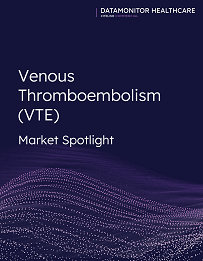Report Library
All Reports
Datamonitor Healthcare CV&Met: Venous Thromboembolism (VTE) Market Spotlight
March 21, 2025
Venous thromboembolism (VTE) refers to the formation of a thrombus (blood clot) within a vein, which subsequently blocks blood flow. VTE is the third most common form of vascular disease following stroke and heart attack. Because VTE is associated with greater morbidity and mortality, early diagnosis and treatment is essential. The most common causes of VTE include cancer, recent surgery, hospitalization, and immobilization.
VTE is subdivided into deep vein thrombosis (DVT) and pulmonary embolism (PE). DVT is characterized by the formation of a blood clot in the deep veins, most commonly in the lower extremities such as the legs, pelvis, or thigh; however, the condition can occasionally occur in the arms or other veins. DVT may occur when the blood flow changes or reduces within the deep veins, when the lining of the blood vessel is injured, or if the composition of blood itself changes, thereby causing the blood to clot. PE is a serious complication of DVT which occurs when a portion of the DVT blood clot detaches from the wall of the vein and flows through the bloodstream to the lungs, resulting in total or partial occlusion of the blood supply to the lungs. Approximately one-third to one-half of DVT patients may develop long-term problems such as post-thrombotic syndrome, while patients with PE may develop pulmonary hypertension.
This Datamonitor Healthcare report contains a Market Spotlight module.
| Indications Covered: | Venous Thromboembolism (VTE) |
